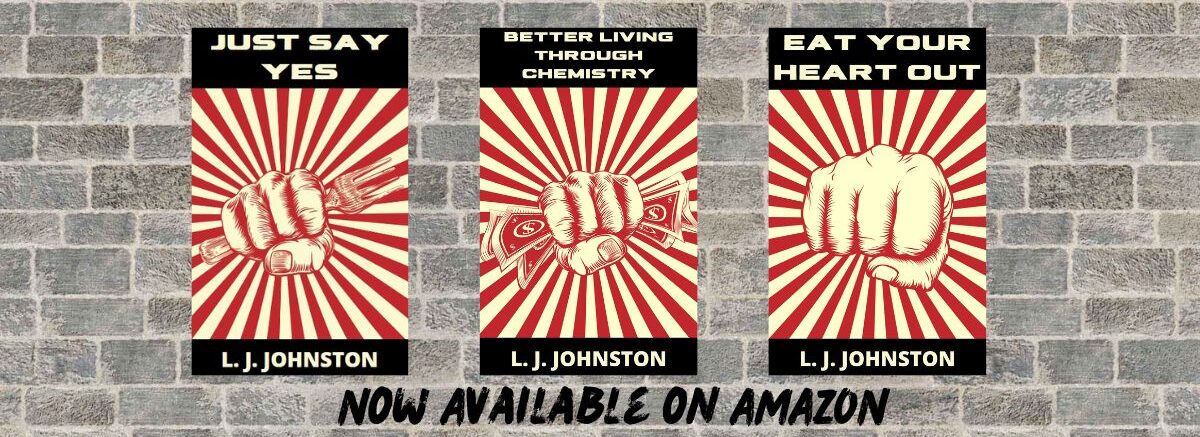A version of this post originally appeared in 2015.
As National Novel Writing Month (NaNoWriMo) comes to a close, gird your loins for the usual flood of post mortem blog posts (like this one). You will see some of the same points made in many of them (like the ones following shortly). That's not to say they're not legitimate. They are - for first-time NaNo participants. They're dying to tell you how they learned how to crank out a respectable amount of words per day, whether they felt like it or not. I learned not to edit and just write, they'll say. But I think NaNo veterans will agree with me when I say these observations fall under the category of No News Here. Yes, I did learn those things the first time I did NaNo. My writing discipline improved as a result. But I hope like heck I'm not snared in a writer's version of Groundhog Day, limited to learning the same stuff over and over. I like to think I come away with something new each time I participate.
Something else in the No News Here category: I am not great when it comes to planning ahead. This year I had grand intentions of using my Scrivener app to have my new novel all outlined and plotted and charted and ready to go, and all I had to do was fill in the blanks scene by scene. But I fiddle-farted around until it was almost too late, and didn't finish my outline before November 1. This was not the end of the world, especially since I still don't know exactly how the story will wind up. Let's just say it's like motor oil: in a fluid state, very much subject to change.
Okay, so now you know what I didn't learn. Here's what I did learn.
- As I mentioned, I became even more comfortable with Scrivener. I learned how to use the Label function for categorizing and the Corkboard for storyboarding. I used the split screen feature extensively, viewing my notes in one screen while composing in the other. I used the Inline Annotation feature to boost word count by letting notes to myself stay within the manuscript, but in such a way that is easy to spot and relocate when the time comes. I learned Scrivener has a Name Generator feature, which is pretty cool. Overall, I am really loving Scrivener. It's around $40, but they run a special during NaNo. I think I saw it was $25. Wish I had known this last year and I would've waited until November to buy it. I paid full price.
- I have blogged previously about my Story Forge cards. I used the heck out of them this NaNo. Whenever I got stuck, out came the cards and I did a spread, usually a character backstory, which stimulated some very productive ruminations. The cards are $20 plus shipping, but they were worth every penny this NaNo.
- Speaking of which, this year is the first time I really gave much thought to character backstories. Thanks to the marriage of my stream-of-consciousness ramblings with the ideas suggested by the Story Forge spreads, I now have fully-formed backgrounds supporting all of my characters that informs their actions in what I think is a believable way. I feel I know them better. And knowing them better suggests all sorts of interesting plot twists and shadings and nuance that I may not have otherwise.
I don't do NaNo with the expectation of having a near-perfect project by December 1, which I edit and publish by the end of the year (the same year). Instead, I expect to have at least 50,000 words of hot mess that is the massive, shapeless mound of mashed potatoes from which I will sculpt my Devil's Tower (Close Encounters fans will get this. Others, that's what Google is for). I estimate around half of my 50,000+ word hot mess (and yes, I did finish, first time ahead of schedule, note blue badge of courage proudly displayed at upper right) is stream-of-consciousness stuff: me talking to myself about the story; spit-balling; spelling out various scenarios; why they have potential; why this might work but that probably won't; the pros and cons of adding or changing characters; tinkering with the setting; and so forth. Most of this material will be shifted to Notes and Research and other support folders and mercifully will not show up verbatim in my novel. I don't consider this cheating, or filler, and here's why: it's time and word count spent focused on the project and has a direct and productive connection to the finished product. Since this is a YA story, I estimate I am 60-70% finished with the first draft. Not bad for only 30 days' worth of my time.
There is one more observation I have on NaNoWriMo: this is the first time I've participated that I don't feel drained and exhausted and completely turned off by the thought of returning to my project any time soon. I can't explain it. Maybe because I've converted to self-publishing, and I know publication is definitely going to happen. Maybe because Scrivener really makes the mechanics of writing and publishing a breeze. I really don't know why. But I'm really looking forward to seeing it through.
Note: I have no affiliation with any products mentioned here. I just enjoy using them.
Thanks for reading! If you enjoyed this post, I hope you'll take a minute to subscribe to my blog (the subscribe box is near the top of the right sidebar).


